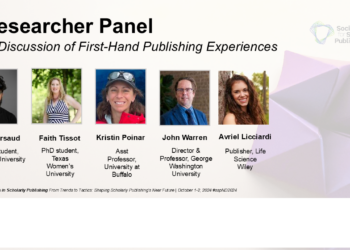
- Medieval scribe. Image via Wikipedia
Academics are praised for their accomplishments, awards, and foremost for their productivity as authors. Some of the most productive researchers are authors on hundreds of papers.
At first blush, one wonders how this is possible. Then you realize that the researcher may not have written the paper or even conducted the experiment.
Like high-energy physics, author lists in biomedical research have gotten long. This is partly due to very large experiments. In 1993, the New England Journal of Medicine published a cardiac intervention study that was run in 15 countries, 1081 hospitals, and involved over 40,000 patients. The authorship on this paper was so long it was given to a group who called themselves “The GUSTO Investigators.” In the appendix are the names of the 972 authors of this paper.
This paper was satirized with an Ig Nobel Prize in Literature that year. To the audience, the journal editor declared jokingly that “each author was responsible for exactly two words.” These physicians were not given authorship credit because they drafted or edited the article — they were rewarded with authorship because they were able to recruit patients into the study.
Editors of biomedical journals are keenly aware of the problems long author lists can make. It is easy to distribute credit when work is highly praised, but difficult to assign blame when a study is found to be invalid, or worse, based on fabricated data.
Unlike high-energy physics, where authors are listed in alphabetical order, authorship order in the biomedical field conveys some meaning. The last author is typically the senior author, the one who is supposed to have overseen the research. In the case of the stem-cell controversy involving the South Korean researcher, Woo Suk Hwang, it was an American physiologist, Gerald P. Schatten who was listed as last author.
If all he did was to write the paper, he should not have been named an author [1]
The University of Pittsburgh investigation report notes, “the discrepancy lies in the subtlety of interpreting the word ‘write’” (p.6). While Schatten claimed to have written the paper, he did not generate the data, figures, or tables in the paper, which is often considered a strict requirement for authorship in the biomedical sciences.
Drummond Rennie has argued for some time that we should abandon the notion of author in favor of contributors and guarantors. Many top journals now require a short list of who did what and who takes full responsibility for the paper. Even more, some journals require signed statements from all authors attesting to what they are responsible for in the manuscript.
This has removed some ambiguity from authorship but it has also replaced trust in science with a formal legal system.
Notes:
[1] Guterman, Lila. “A Silent Scientist under Fire.” Chronicle of Higher Education 52, no. 22 (2006): A15. (subscription required)
Discussion
1 Thought on "Legalizing Authorship"
![Reblog this post [with Zemanta]](http://img.zemanta.com/reblog_e.png?x-id=9fdf340f-1bbf-4ebb-988e-3c6929ab5352)


